Ramona’s California
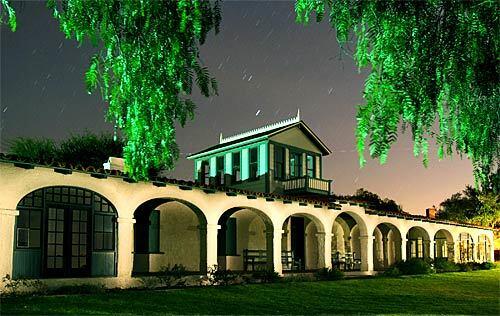
Rancho Guajome is illuminated under a starry sky. Author Helen Hunt Jackson spent several days at the San Diegoic> County hacienda, which bears a likeness to the one in her popular novel, Ramona. (Don Bartletti / Los Angeles Times)
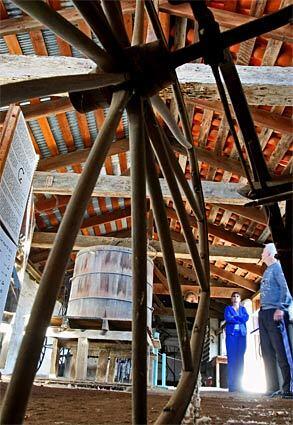
Kevin Taylor and her husband, Steve, check out the hand-hewn beams in the blacksmith shop at Rancho Guajome. The story goes that the haciendas builder, Cave Johnson Couts, scavenged the sycamore timbers from the ruins of nearby Mission San Luis Rey. (Don Bartletti / Los Angeles Times)
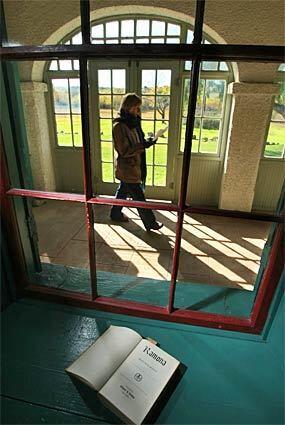
An old copy of Ramona sits in a guest bedroom at the hacienda. In the nearby sun room, a museum visitor takes a self-guided tour. After the book came out, Guajomes owners, the Couts family, began pitching its connection to Ramona, even wooing tourists in cooperation with the nearby Santa Fe Railway. (Don Bartletti / Los Angeles Times)
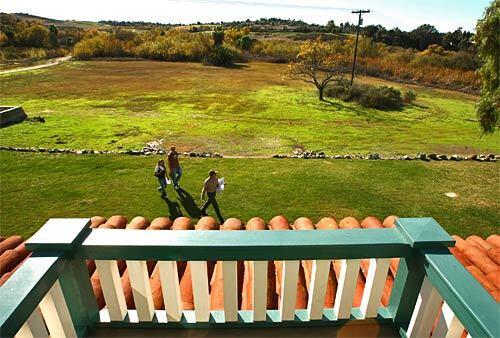
Looking out from the tiny sewing room roof, a park ranger gives a tour to a couple planning their wedding at Rancho Guajome. The marsh in the upper right is supposedly the washing place made famous in the novel. Its where the characters Ramona and Alessandro met and fell in love. (Don Bartletti / Los Angeles Times)
Advertisement
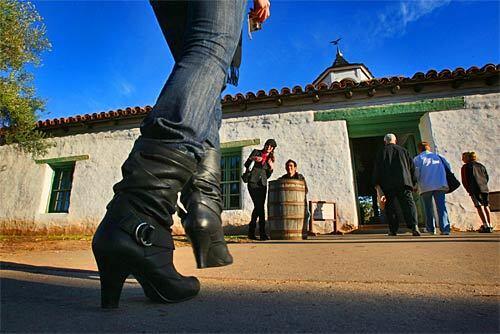
Friends pose for photos outside La Casa de Estudillo, an adobe hacienda on the main plaza at Old Town
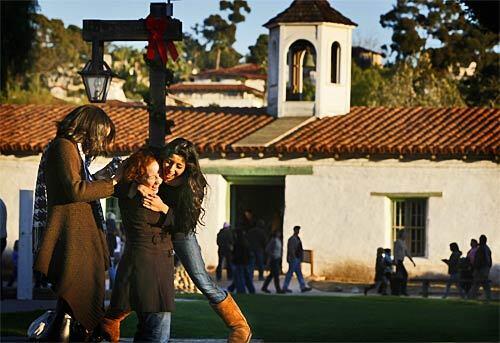
Goofing off in front of the Casa de Estudillo are three friends from
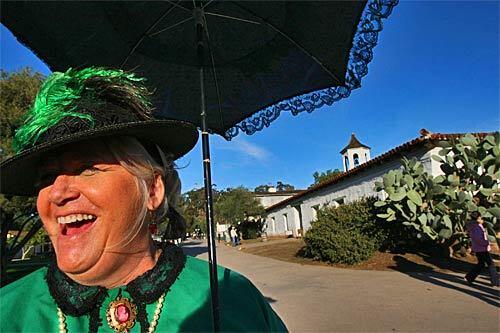
Tour guide Lisa Long takes on the role of Sarah Robinson, one of the first settlers in Old Town
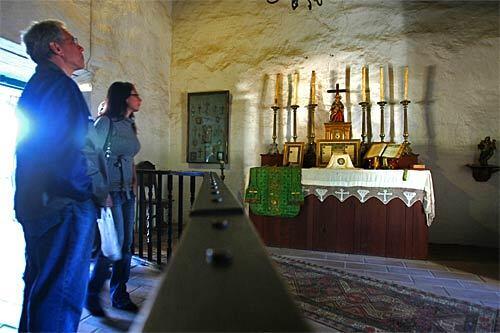
Visitors gaze at the altar in a tiny chapel at La Casa de Estudillo, where fans of Ramona believe the two young lovers married. Today, the house is part of Old Town
Advertisement
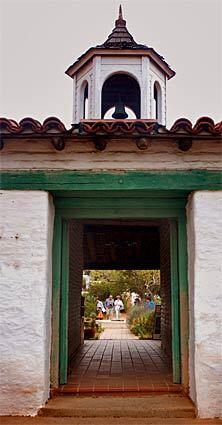
A bell tower crowns the roof of La Casa de Estudillo, which was completed about 1830. At one time, it was the grandest house in
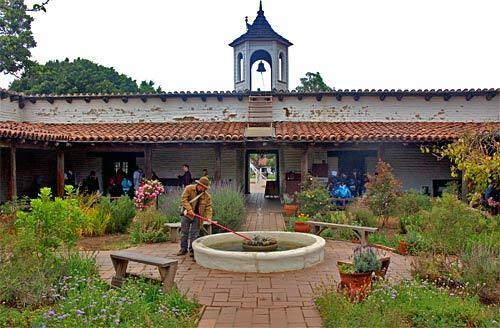
A worker tends to a fountain in the gardens of the casa in
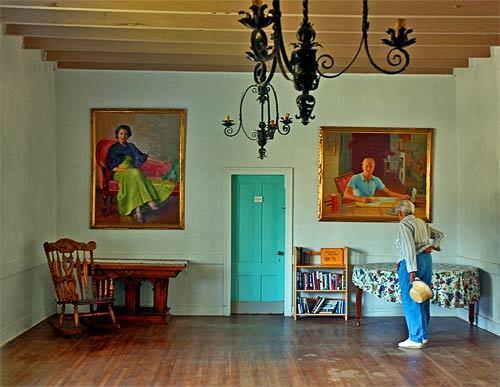
Paintings of members of the Rübel family line a wall of the hacienda at Rancho Camulos.
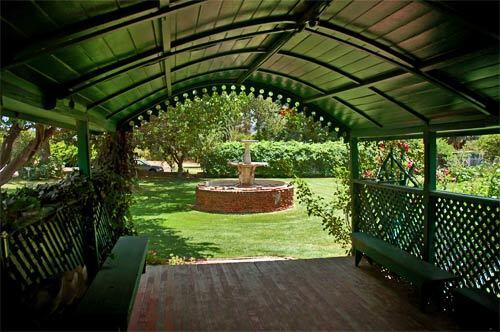
At the ranch, the entrance to the chapel is itself a shady retreat. Facing it are Camulos gardens and a fountain. A visitor to the ranch in Jacksons day would have found a winery, chapel, grapevine arbor, calm courtyard and an inviting veranda. (Christopher Reynolds / Los Angeles Times)
Advertisement
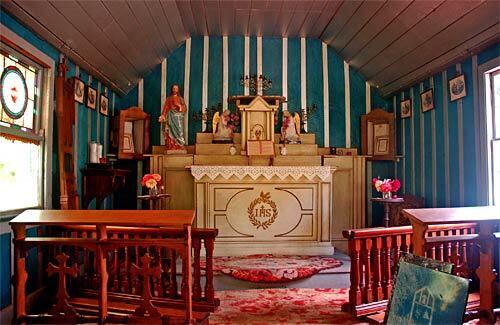
Rancho Camulos includes a free-standing chapel similar to the one at Rancho Moreno, the imaginary setting of Ramona. After the book was published, the ranchs then-owners, the Del Valley family, were inundated with fans of the novel. (Christopher Reynolds / Los Angeles Times)
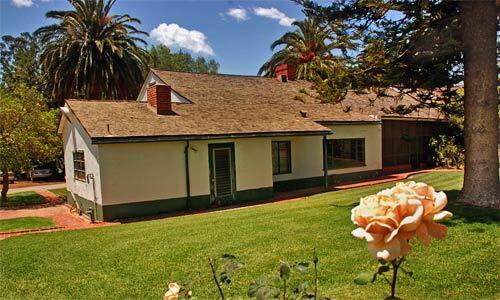
The hacienda at Rancho Camulos. More than a century after the first Ramona fans started showing up at the ranch, its owners still accept visitors, maintain a small museum and gift shop and rent space out for weddings. (Christopher Reynolds / Los Angeles Times)
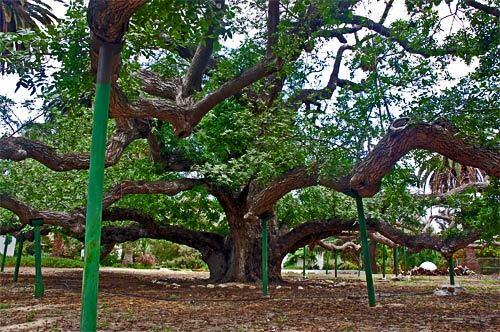
The
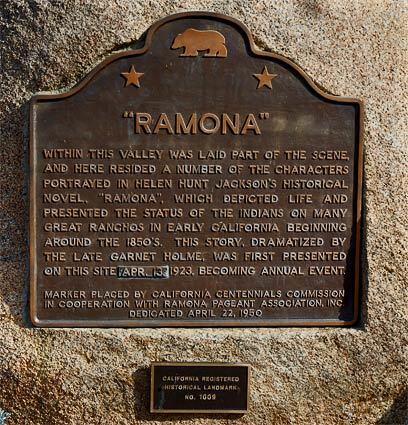
The Ramona Bowl Amphitheatre in Hemet is home to the Ramona pageant, and a historical marker commemorating the annual productions, which began in 1923. (Christopher Reynolds / Los Angeles Times)
Advertisement
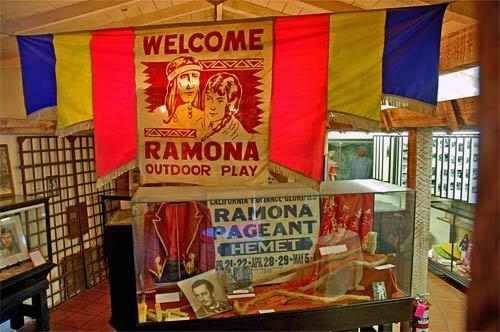
A small museum at the Ramona Bowl exhibits memorabilia from past productions and early editions of the novel. Over the years, the young women playing Ramona have included Raquel Tejada, who soon became better known as



